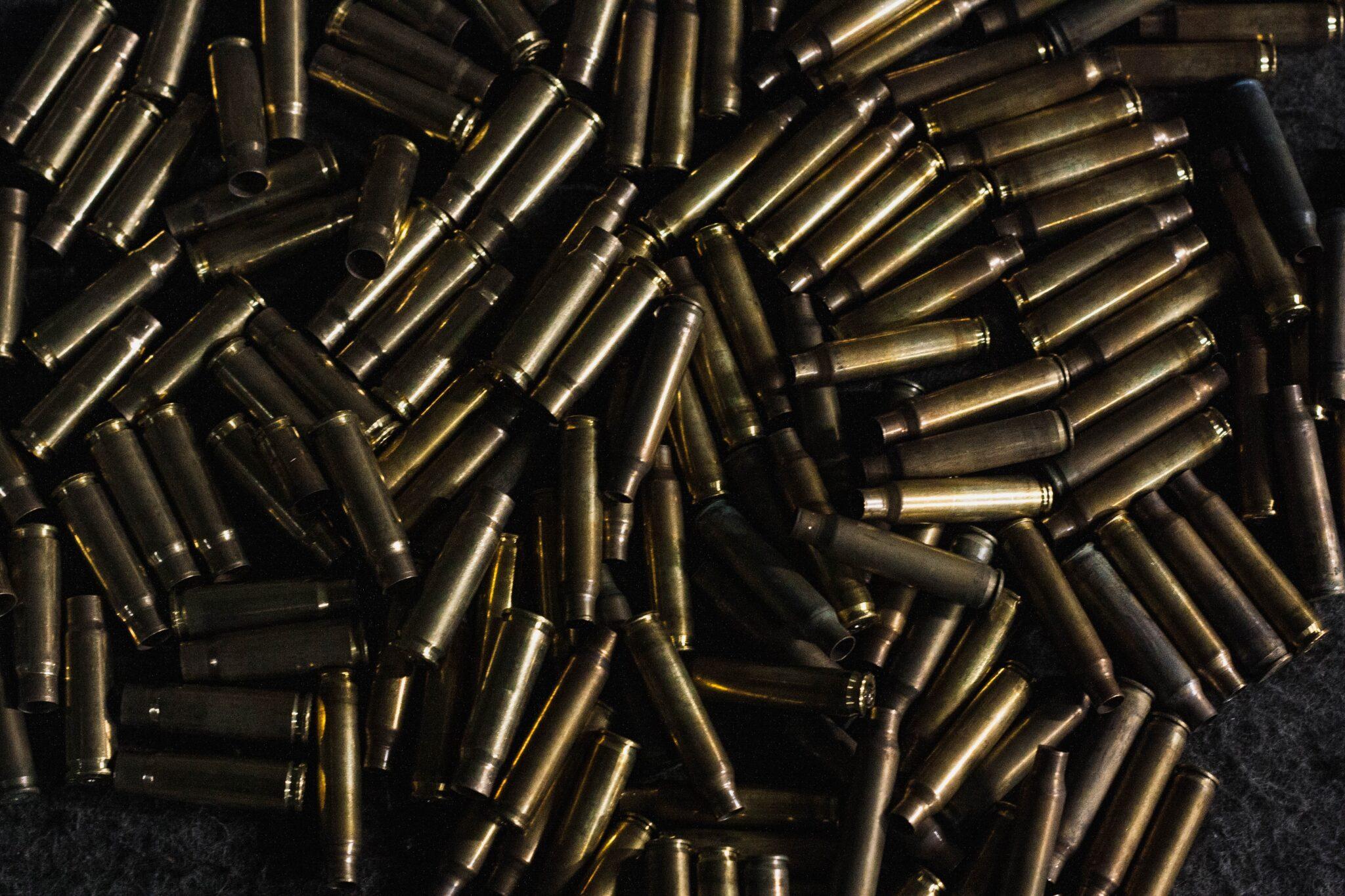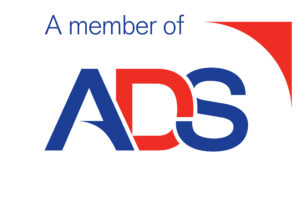As the Russian invasion began toward the end of February, the focus was rightly placed on the Ukrainian response and support. Whilst the conflict itself needs little introduction, if you are sending personnel to Ukraine from the UK there are several factors contributing to the conflict that require legal consideration. This includes:
- The modern-day capabilities of UK commercial technical, security, and defence companies;
- Any potential relationship between these companies and the Ukrainian military/government including ‘civilian resistance’; and
- The approach taken by the UK government to involvement in the conflict
We have drafted this blog for commercial companies so that they can adopt a risk-based approach to providing assistance. Moreover, with NATO (and therefore the UK) not intending to engage the Russian military within Ukraine, various governments are perhaps turning a blind eye, if not (anecdotally) actively supporting the international civilian resistance to the Russian military.
Rather than creating an endless list of questions and answers, this blog aims to provide an overview of the legal position for companies to consider, should they be either contemplating to or operating within the conflict space or with the Ukrainians in one form or other.
The current legal position per the laws of armed conflict.
Russia has invaded Ukraine using its armed forces. Whilst the pretext appears to be based on ridding Ukraine of Nazis and protecting Russians, there is no realistic legal basis that Russia could put forward to justify their actions but nevertheless a state of armed conflict exists in Ukraine. International law requires that the Laws of Armed Conflict (LOAC) are now applied. LOAC is also known as International Humanitarian Law (IHL). It is made up of the Hague Conventions, Geneva Conventions and Additional Protocols. It also provides, in various ways, for when criminal offences may be committed, more specifically war crimes, crimes against humanity and genocide.
LOAC was not solely designed to provide rules for which armed forces should operate in so far as their conduct must be necessary, distinctive, proportional and humane, but was primarily designed to protect civilians, prisoners, the wounded and the sick during times of war and conflict. War and conflict are not necessarily the same, but LOAC applies to both. Generally, war is between two distinct states whereas conflict can arise internally within a state.
Whether Russia agrees with and follows LOAC or not is largely irrelevant. LOAC is considered customary international law meaning the Russians must adhere to it, and most of the rest of the world will judge Russia by these standards, as was done in the former Yugoslavia and Rwanda for instance. If Russia chooses not to adhere to LOAC, which based on the recent allegations of atrocities against civilians it appears it is not, they could still be prosecuted for breaches of it.
Combatants
Within LOCA, various protections exist for persons who take part in hostilities within strict categories as outlined in Article 4A of Geneva Convention III. These persons are ‘combatants’ and are entitled to protections under Geneva Convention III regarding prisoners of war (POWs). In addition to POW status and treatment, lawful combatants enjoy ‘combatant immunity’ which is the right to participate in hostilities and to enjoy immunity from their warlike acts, including the destruction of property and the wounding or killing of other human beings, provided these acts are committed in the context of ongoing hostilities. However, designation as a combatant means that one can be lawfully targeted by the enemy at any time.
Under Article 4A of Geneva Convention III, to be considered a combatant and be entitled to participate in the hostilities, the individual must fit into one of several categories.
- Article 4A(1) – grants combatant status to members of the armed forces of a party to the conflict as well as members of militias or volunteer corps forming part of the armed forces of a party to the conflict. This could also include members of State law enforcement, provided they have been formally incorporated into the armed forces of the State for whom they fight.
- Article 4A(2) – other volunteer groups not formally incorporated into the armed forces of the state are entitled to combatant and POW status and treatment, provided they are under responsible command, wear a fixed distinctive sign recognizable at a distance, carry their arms openly, and conduct their operations under the law of armed conflict.
- Article 4A(3) – members of regular armed forces who profess allegiance to a government or an authority not recognized by the adverse party. The adoption of Additional Protocol I in 1977 added national liberation fighters to the list of combatants – persons who are fighting against colonial domination, alien occupation or racist regimes, and who, carry their arms openly during each military engagement, and during such time as they are visible to the adversary while engaged in a military deployment preceding the launching of an attack in which they are participating.
- Article 4A(6) – civilians who take part in a levée en masse have combatant status, with a levée en masse defined as inhabitants of a non-occupied territory, who on the approach of the enemy spontaneously take up arms to resist the invading forces, without having had time to form themselves into regular armed units, provided they carry arms openly and respect the laws and customs of war. Participants in a levée do not need to have a command structure, nor wear fixed distinctive signs, but must carry their arms openly and follow the rules of laws of armed conflict.
Any person who takes part in hostilities without meeting the criteria listed above is a civilian taking direct part in hostilities (see below)
Civilians
Civilians are defined in Article 50 of Additional Protocol I as all persons who are not combatants. Civilians enjoy what is known as civilian immunity – they may not be targeted by parties to the conflict and targeting civilians is a war crime under international law under Article 8 of the Rome Statute of the International Criminal Court. Civilians enjoy immunity from direct targeting by the enemy for so long as they refrain from taking a direct part in the hostilities. However, if civilians take a direct part in hostilities, they lose this immunity and are liable to be targeted for as long as they take a direct part.
Civilians taking direct part in hostilities
The exact parameters of what amounts to ‘direct part in hostilities’ under international law and when such immunity is lost and regained is contested, but it is generally accepted that a civilian loses their civilian immunity when they engage in hostile acts in support of one party to the conflict, when those acts cause damage, injury, or death to another party to the conflict, or otherwise harm enemy military capacity. For so long as the civilian carry out hostile acts, they will lose their immunity.
Civilians who are taking direct part in hostilities, however, do not lose their civilian status, only their immunity from targeting, and only for as long as they are taking direct part in the hostilities. Civilian immunity can be regained when their involvement in taking a direct part in the hostilities ends.
Civilians who are taking direct part in hostilities, however, do not lose their civilian status, only their immunity from targeting, and only for as long as they are taking direct part in the hostilities. Civilian immunity can be regained when their involvement in taking a direct part in the hostilities ends.
Across the various interpretations of ‘direct part in hostilities’ in case law and in practice, acts that are considered DPH include:
- operating weapons or weapons systems;
- transporting munitions and personnel to and from hostilities;
- and/or engaging in acts of sabotage and disruption against material and communications.
Commercial UK companies working within Ukraine or for the Ukrainian government
Why does the above matter?
NATO and governments are not stepping into the fray in respect of Ukraine, yet. Commercial companies’ capabilities, especially in respect of intelligence arguably outstrips some government capabilities at present. UK Commercial companies are also not quite so hamstrung by legislation such as the Regulation of Investigatory Powers Act 2000 imposed on UK government entities. To this end, UK commercial companies can offer extensive capability to the Ukrainian government but need to understand their legal risk in doing so.
Of further relevance is the conduct of security companies working in war zones. Because of the broad aspects of activities carried out by security companies and/or private military companies, this blog cannot define every circumstance whereby companies operating in Ukraine or providing direct support to those engaged in hostilities in Ukraine, may or may not be defined as civilians or otherwise under LOAC. It is therefore important to understand that it is the nature and circumstances of the functions carried out by the personnel of security companies or private military contractors that determine their status as civilians or combatants. Company leadership should address this issue before operating within Ukraine. These 6 principles will assist:
- Private military contractors must always comply with international law – International humanitarian law and human rights;
- It is the nature & circumstances of the functions carried out by the personnel of private military contractors that determine their status as civilians or combatants;
- Personnel of private military contractors lose their protection as civilians for such time as they directly participate in hostilities;
- Personnel of private military contractors are civilians except if incorporated into the regular armed forces of a State or are members of organized armed forces, groups or units under a command responsible to the State;
- Personnel of private military contractors can be prosecuted if they commit crimes;
- Personnel of private military contractors are entitled to Prisoner of War status in international armed conflict, only if they are authorized to accompany the armed forces & have been provided with an identity card.
The definitions of private security companies and private military companies require some further comment. Organisations such as the International Code of Conduct for Private Security Service Providers Association (ICOCA) has put significant effort into the distinction between the types of companies. However, experience indicates that many companies who are not aware of ICOCA or have no need to be aware are likely to be operating as private military or security companies without understanding the distinctions and risks.
As well as protecting civilians, LOAC also provides boundaries under which civilians must adhere to. For instance, a civilian group cannot decide to form an ad hoc militia and engage in hostilities enemy, then seek to claim to be a civilian and claim the immunities afforded by LOAC because it suits them to do so. For so long as the civilian carries out hostile acts, they will lose their immunity.
Whilst in practice confirming the distinction above to allege any sort of breach of LOAC would be difficult, private security or private military companies providing direct training or support to such militias would need to be aware of the legal risks.
The use of private contractors (regardless of the skills they provide), whether as individuals or as entire companies accompanying the armed forces is nothing new and largely uncontroversial but it presents risks to be considered and mitigated. Article 4(4) of the Geneva Convention directly deals with use of civilians accompanying the armed forces. However, the conflict in Ukraine is not an expeditionary armed force and per se, a UK company operating in Ukraine would not be considered as accompanying the armed forces. However, the Geneva Conventions undoubtedly apply to this conflict and might be argued to apply to companies directly contracted by the Ukrainian government. Any UK company operating in Ukraine, directly or indirectly, should consider their activities from this perspective.
Companies may be tempted to outright offer war fighting capability, especially given the misguided comments of the UK Secretary of State for the Foreign, Commonwealth and Development Affairs Liz Truss. On 27 February 2022, she stated that Britons who choose to go to Ukraine to fight would “absolutely” have her support. However, this is in direct conflict with the Foreign Enlistment Act 1870, where it is an offence to enlist oneself or others for armed service with a foreign state that is at war with a state which the UK is at peace. Yet, the UK is not at war with Russia.
Such a comment by a serving secretary of state might be relevant in any defence put forward by an individual or company who is later accused of offences that may amount to a breach of the Foreign Enlistment Act 1870 but is it not clear as to the impact of this defence.
Armed Civilians in Ukraine and Ukrainian Law on Arms
Ukraine is the only country in Europe where firearms are minimally regulated by statute. Prior to the Russian attack on Ukraine, the use of firearms was regulated by Order №622 of the Ministry of Internal Affairs. Under this order, citizens of Ukraine are permitted to own non-fully automatic rifles and shotguns if they are stored properly when not in use. This Order applies to only Ukrainian Citizens, not foreign civilians.
Ukraine’s parliament has moved to relax gun and armament regulations further on 23 February 2022, by voting to approve a draft law that permits Ukrainians to carry firearms and act in self-defence. This has not yet been implemented into Ukrainian law and relates only to Ukrainian citizens – not foreign civilians.
According to Regulation on Military Service in the Armed Forces, approved by Decree of the President of Ukraine #248 of June 10, 2016, foreigners have the right to join the Armed Forces of Ukraine for military service under a contract of a voluntary basis to be included in the Territorial Defence Forces of the Armed Forces of Ukraine. President Zelenskyy has more recently used this decree to create a foreign legion of volunteers for foreigners who wish to join the battle against Russia, formally referred to as the International Legion of Territorial Defence of Ukraine. The process of joining involves contacting the Ukrainian embassy within your home country and going through a formal visa process to allow the individual to hold and use weapons.
Mercenaries
This leads to considering the law surrounding mercenaries. Mercenaries must be distinguished from civilian companies and individuals that contract to the armed forces of their state or a coalition. Whilst there can be times when the distinction is blurred, mercenaries are not the same as private security or private military companies for this blog.
The definition of a mercenary is found in two documents[1]: Article 47 of Protocol I, the “Convention on the Elimination of Mercenarism in Africa” of 1977, and the “International Convention against the Recruitment, Use, Financing and Training of Mercenaries” adopted in 1989 by the United Nations General Assembly.
According to Article 47 of Protocol I, a mercenary is any person who:
- is specially recruited locally or abroad to fight in an armed conflict;
- does take a direct part in the hostilities;
- is motivated to take part in the hostilities essentially by the desire for private gain and is promised, by or on behalf of a Party to the conflict, material compensation substantially in excess of that promised or paid to combatants of similar ranks and functions in the armed forces of that Party;
- is neither a national of a Party to the conflict nor a resident of territory controlled by a Party to the conflict;
- is not a member of the armed forces of a Party to the conflict; and
- has not been sent by a State which is not a Party to the conflict on official duty as a member of its armed forces.
This definition, which requires that all six conditions be fulfilled, has been judged as unworkable in some corners and will seldom apply to private contractors. In addition, the UK has not signed up to either convention, but Protocol 1 of the Geneva Convention defines mercenaries as unlawful combatants. The UK could, possibly, prosecute an individual in the event evidence indicated they had conducted themselves in such a way as to be classed as an unlawful combatant. However, the risk of this is remote given yet, the UK has been unable to secure any convictions under the International Criminal Court Act 2001.
Notwithstanding, UK companies that directly contract with the Ukrainian government must examine their obligations under any contract to ensure they do not fall foul of the above definition, and that their conduct would not amount to a direct participation in hostilities. In the event of the latter, whilst it would not necessarily lead to prosecution, it would remove any protections afforded to civilians under LOAC which presents risks to be considered in respect of negligence and duty of care from a corporate perspective. Plus, the conduct could be construed as amount to acting as mercenaries which more than anything, may bring negative publicity leading to an impact on existing and future business.
While it is likely to be a small, but not diminishing risk to companies providing such services, the provision of it must be considered. There is enough comparison, as explained below, for problems to emerge for companies in the area of direct participation in hostilities if activities are not carefully thought through. It is important to distinguish that the services of [civilian] military advisors and technicians are not considered mercenary activities. The commentary of Article 47 of Protocol I states that “the increasingly perfected character of modern weapons, […] requires the presence of […] specialists […]. As long as these experts do not take any direct part in the hostilities, they are neither combatants nor mercenaries, but civilians who do not participate in combat”[2].
Whilst, for instance, food services, repair work or warehouse administration also cannot be considered as direct participation in the hostilities, it is more likely that private contractors involved in the transportation of weapons and other military commodities, intelligence, strategic planning or procurement of arms, may lose the protection afforded to civilians under LOAC.
Although now superseded, the United States Naval Handbook of 1995 lends a hand to interpreting direct participation in hostilities by stating: “Direct participation may also include civilians serving as guards, intelligence agents, or lookouts on behalf of military forces. Direct participation in hostilities must be judged on a case-by-case basis”[3]. The ICRC publication[4] by Alexandre Faite, Legal Advisor, International Committee of the Red Cross approaches the subject of civilians providing intelligence capability and comments on page 7 that “Collecting information or working for the enemy’s intelligence network” would be classed as direct participation in enemy hostilities. He does so by referring to the quote as being from the same Naval Handbook of 1995.
This comment approaches collecting information for the enemy, but international humanitarian law is reciprocal, so it applies to both sides of a conflict.
The above arguably reinforces the point that companies providing services such as intelligence, at the very least, may stray into the area of direct participation in hostilities. In real terms, the impact for companies is likely only to a risk if they deploy staff into Ukraine to provide such services, meaning that the Russians could treat those staff as legitimate targets. Furthermore, the provision of intelligence services may satisfy the requirement of Article 47(b) of Protocol I, the “Convention on the Elimination of Mercenarism in Africa” of 1977. But it should be remembered that all 6 aspects of the convention are required to satisfy the definition of being a mercenary.
It is accepted that the likelihood of being discovered conducting activities that a prosecutor might take an interest in is remote. But it is not so remote as to be treated as a disregard legal risk because the consequences of a prosecutor taking an interest would be at a minimum damaging to any reputation and likelihood of future similar work if exposed. To safeguard against such a risk, there need to be boundaries put in place.
What next?
All the above requires legal consideration for commercial companies and individuals so that they can adopt a risk-based approach to providing assistance. Such a risk-based approach would involve
- Speaking to your insurance company
It is important that activities and employees involved in the crisis are covered by your insurance. You have a legal duty to assess the risks to the health and safety of your employees (and risks to the health and safety of persons not in your employment) to which they are exposed while they are at work
2. Risk Assessments
Identify and analyse the potential events that may negatively impact your business, employees and assets. Any judgement should be made on the tolerability of the risk based on this risk assessment.
3. Speak to us
If you have sent or are sending staff or individuals or teams to Ukraine, and are unsure of the legal position, please do get in touch with us at Proelium Law. We acutely understand the legal position.
[1] There is no definition under UK law of mercenaries. The International Criminal Court Act 2001 provides jurisdiction to prosecute grave breaches of the Geneva Conventions, torture, genocide, war crimes and crimes against humanity committed by British nationals either in or outside the United Kingdom. This legislation would also enable the UK to prosecute a British national accused of committing such crimes overseas while working for a private security company or as a mercenary.
[2] Commentary on the Additional Protocols of 8 June 1977 to the Geneva Conventions of 12 August 1949, Y. Sandoz, Ch. Swinarski, B. Zimmermann, International Committee of the Red Cross, Martinus Nijhoff Publishers, Geneva 1987, § 1806.
[3] United States Naval handbook (1995), Para 11.3
[4] https://www.icrc.org/en/doc/assets/files/other/pmc-article-a-faite.pdf







